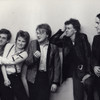"They were the last mill owners" someone once joked about Factory in the eighties and whilst they could sometimes suffocate the city with their media dominance, years later the label stands up for the sheer breadth and quality of its releases and its beautiful ambition that not only released so much great music but practically re-designed the whole city centre of the UK’s number one music city.
In the 21st century indie has become a byword for plodding stadium guitar rock, a wishy-washy word for wishy-washy music. At one time it meant something quite different. It meant making and releasing music on your own terms, it was about creating great art and changing the way the world was perceived.
Grand ambitions maybe but far more exciting than the perfunctory lap of honour round the stadiums that it has come to mean.
Factory Records were just one of a whole host of maverick labels that sprung up in the aftermath of punk rock. Perhaps inspired by the Buzzcocks key 'Spiral Scratch's' release in January 1977 a whole generation of unlikely bedroom operations sprung up in the UK releasing music that was the opposite of what the music business was churning out. Perhaps the most important label of them all was Factory.
A haphazard blend of pretentious over reaching and northern working class cynicism, of high art and street drugs, of punk rock and psychedelia, of dark funk and rainy day melancholy... can there ever have been another label like Factory?
Few labels manage to soundtrack a whole city. Like a Manchester Motown, Factory did that but with a lot of twists. The label was a platform and space for the unfettered creativity of everyone that past through it. It was also rubbish at business but that’s a good thing because when you watch accountants dance you despair that they have ever been allowed to run the music biz.
Factory had a head start of course, not every other label had a wildfire TV presenter fronting it, not every other label had the brilliant graphics of Peter Saville to hand or the sound sculpting genius of Martin Hannett or the bluff bludgeoning Terminator E- Rob Gretton. Factory had all these and still nearly fucked up till they signed Joy Division the most important band of the late seventies who have become one of the biggest cult bands of all time. Joy Division set the Factory staple with their dark, bass driven melancholy and Factory’s early history is clouded by the band and their charismatic frontman's distinct vision and untimely demise.
Too many bands signed to factory were tarred with the Joy Division brush but that glosses over what really made, the label - the depth of talent hidden away by the success of its alpha band. I grew up with Blackpool’s Section 25, they were the big local band. As we were fumbling around with our early sonic excursions in the Membranes, Section 25 were making these driving, pounding bass driven songs before anyone had heard of Joy Division. Pretty soon they would be making this twisted, melancholic, psychedelia before creating 'Looking from A Hilltop' arguable the best electro dance crossover hit on the label- better even than New Order's mega hit 'Blue Monday'.
Meanwhile A Certain Ratio criss-crossed their love of the drone with a Brian Eno funk and were dressed in khaki shorts with skin stained with gravy browning. Decades later, they got their due and have often been quoted as a key influence. It doesn’t end there, a whole host of skinny northern boys with doleful expressions and severe haircuts were creating a whole new genre of music that was one part melancholic, one part danceable, one part nimble bass player, and one part anti vocal - there was the Stockholm Monsters who were the Happy Mondays five years too early. There was OMD's greatest moment - their debut ‘Electricity’ single; The Wake who briefly had Bobby Gillespie onboard; Tunnelvisons' genius 'Hydroplains'; Durutti Column's baroque carnival of breathtaking finger picking from a flat in Didsbury. There was also the one man and his guitar of Kevin Hewick, a one off single from Cabaret Voltaire, the initial singles from James, the mega sellers from Barney’s Electronic, the scallydelic Northside, the jangling pop of Railway Children, a Sex Pistols interview and even a woman in there with Cath Carroll’s bed-sit introspection. There was also a menstrual egg timer designed by the wonderful Linder and about 200 other things.
Later on there was the pre house dance stuff that the most important DJ in the UK and Factory) A&R man Mike Pickering was bringing in from his own Quando Quango to 52nd St to Marcel King, and even if Pickering’s eternal frustration the _Factory bosses seemed deaf to the huge dance anthems that were now rocking the Hacienda meant that factory missed out on Black Box and just about every dance anthem - the label still had its part to play in the acid house boom.
Few labels have released a nightclub like Factory did when it opened the Hacienda, whilst most labels at the time were mired in the indie wars Factory went 3D and created the most important club in the UK and gave it a catalogue number, it took a few years for Manchester to love the Hacienda but when it did youth culture change dramatically, factory’s latest signing the Happy Mondays were knocking out the E’s in a corner of the club and within weeks Manchester went baggy, The Happy Mondays lolloping funk became the soundtrack and the UK had never looked the same since.
Factory was a truly revolutionary label, and it could afford to miss the Smiths, the Stone Roses and let James go and still be considered crucial. Factory nearly created a major label dynasty outside the London-centric music biz. Factory released a lot of very good records, it was deadly serious, it was also funny in an avant garde kinda way because no matter how high art it was it always remembered that avant garde was French for bullshit; for every deadly serious missive there was a situationist prank, for ever slice of avante-funk there was a bizarre one-off release. For every fantastically pretentious quote from Tony there was a mad drug story.
They may have been the last mill owners in Cottonopolis but they also threw the best party in the city.






















